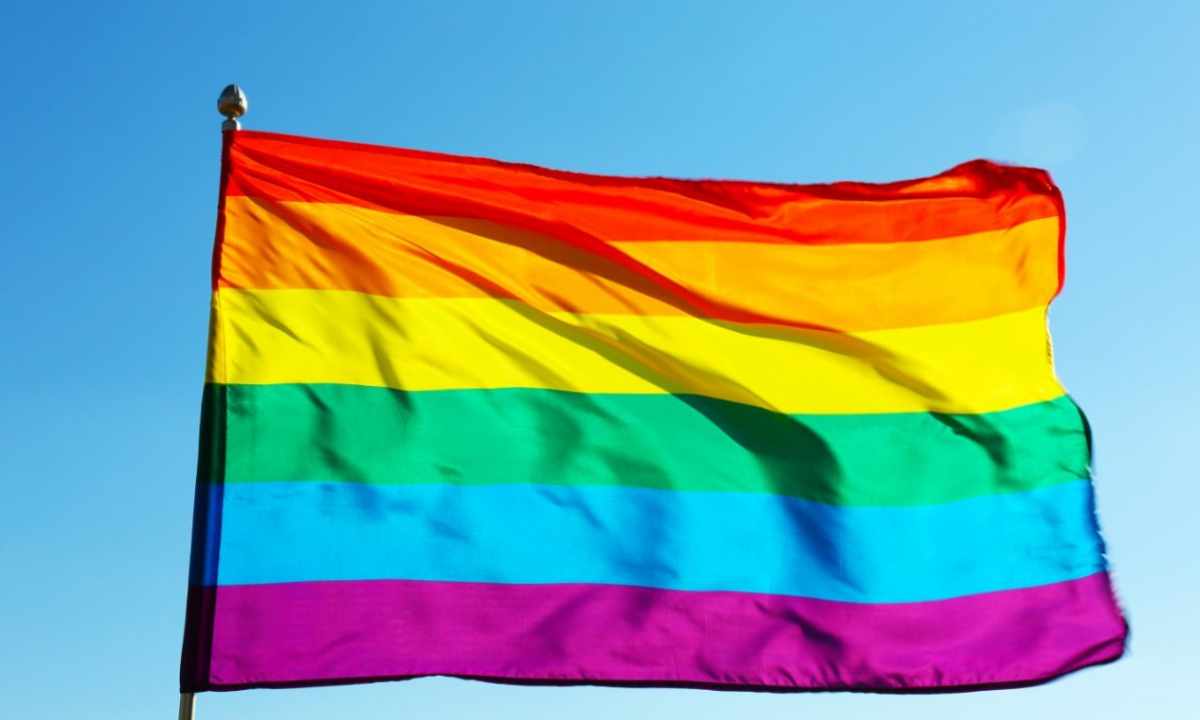One of the leading symbols of LGBT-community which includes lesbians, gays, bisexuals and transgender people is the flag on which all colors of the rainbow except for blue are represented. The history of emergence of this flag is connected with a name of Gilbert Baker.
Key symbol of the LGBT-community and movement which is speaking out in defense of them it is right, the iridescent flag is. On it six horizontal strips which are repeated in the order of color of the rainbow without blue are represented: red, orange, yellow, green, blue, violet. Use of this attribute is widespread in the different countries, first of all, in situations which are directly connected with LGBT community: on parades, meetings, public actions and also on facades of ""Gay-friendly"" of the organizations which emphasize with the image of a flag the toleranstvny attitude towards lesbians, gays, bisexuals and transgender people.
A creator of this symbol of LGBT is Gilbert Baker - the American artist and the public figure. The gay parade in San Francisco became on June 25, 1978 a reason for creation of the international flag of this community. This year became sign for development of the LGBT movement as for the first time in California it was elected to a political post of people which made coming out of the closet, that is openly recognized itself as the gay - Harvey Milk.
The idea of placement on a flag of iridescent symbolics is attributed to three different circumstances. The first of them - loan by Baker of ""a flag of races"" of the movement of the African Americans for the civil rights. The second - loan of the idea from hippie under the influence of the pioneer of the gay movement Allen Ginzberg who treated this subculture. The third - the death of the actress and singer Judee Garland who in the movie ""Wizard of the Country of Oz"" executed composition ""Over a rainbow"". The LGBT community recognized this song as the anthem therefore according to one of versions it became a basis of the idea of an iridescent flag.
Together with the LGBT activists Baker sewed two cloths from muslin (very fine fabric of a calico weave) and painted them manually. However originally the flag had other colors in bigger quantity: saturated pink, red, orange, yellow, green, turquoise, indigo, violet. Its transformation in the present standard option happened in 2 stages. The refusal of the image on a flag of the pink color symbolizing sexuality as production of cloths was complicated because of complexity of obtaining such color and its high cost became the first change. The following transformation is connected with another gay parade in the USA in 1979. The flag was decided to be hung up vertically on two columns, but because of odd amount of colors, the turquoise color representing magic and art completely was behind columns and was not visible therefore the decision to make six strips on a flag was made.
The idea of an iridescent symbol of LGBT - release, motivation to tell ""no"" to conventions, an exit for a framework and open recognition of by those whom people consider themselves. The modern option of a flag has such value: red — life, orange — health, yellow — sunlight, green — the nature, blue — tranquility and harmony, violet — strength of mind of the person. Baker said that the rainbow on this attribute perfectly illustrates a variety of people in the world. Closer to the end of the life which broke in 2017 it suggested to return pink and turquoise color on a flag.

